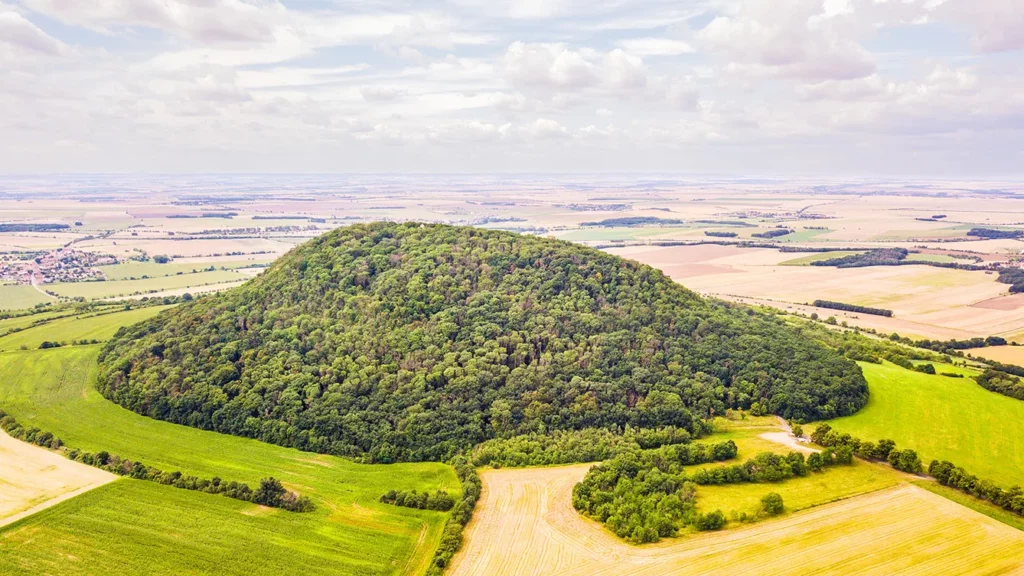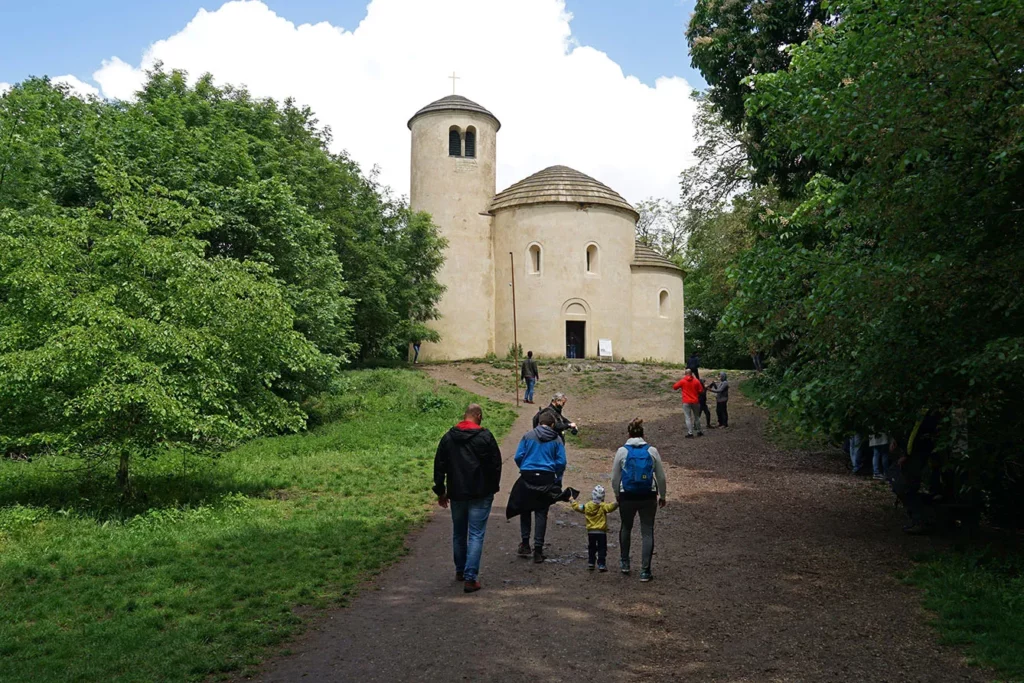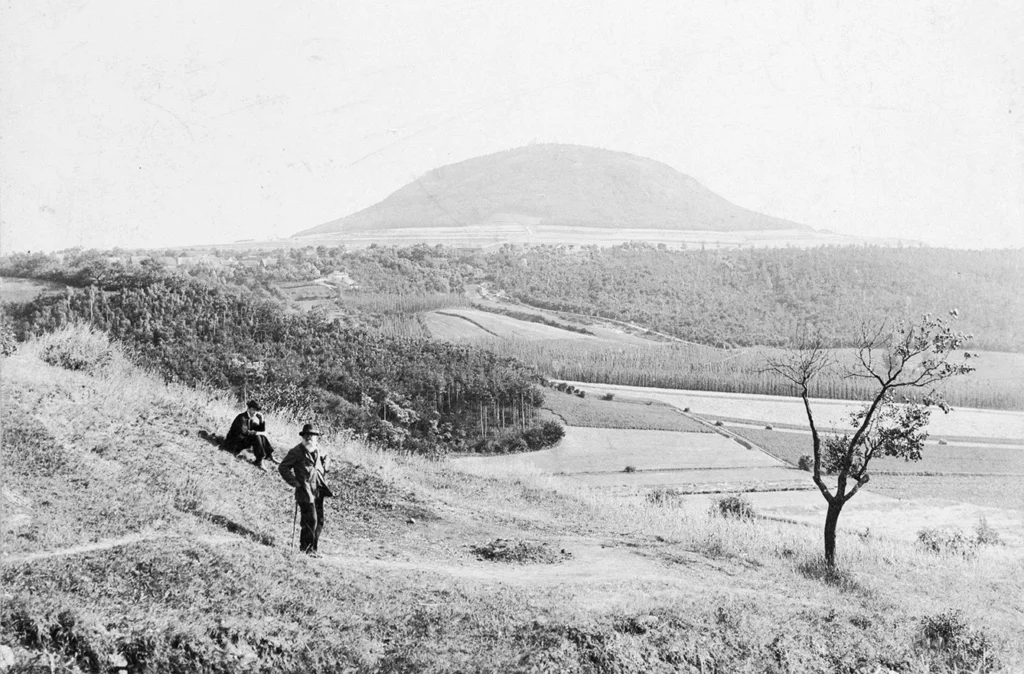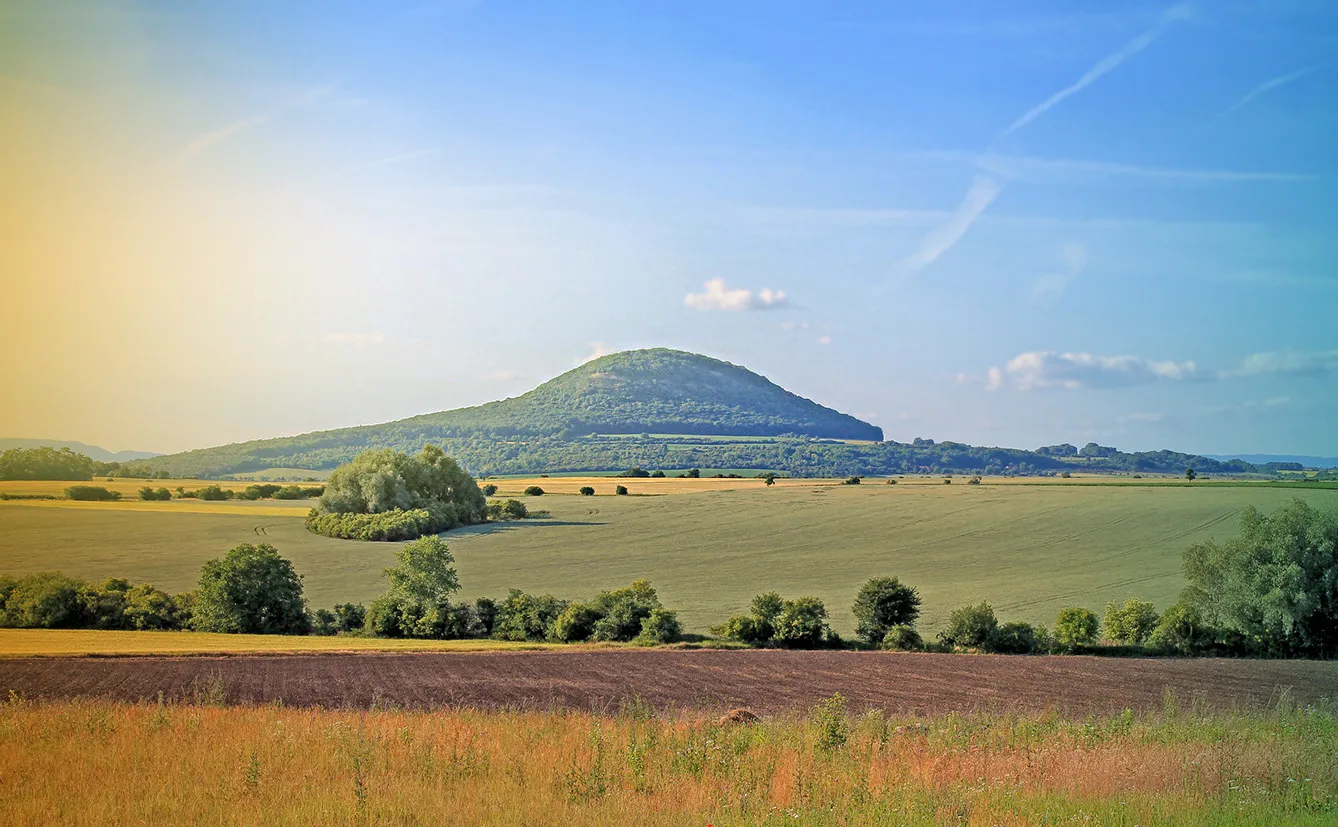The very first legend about the history of the brave Czech nation mentions this hill, which rises to the heavens in an otherwise flat landscape. This hill, commonly called a mountain, was to be climbed by the Forefather Czech, who led his people from the Eastern steppes to the promised land. When his company was tired, the Forefather Czech climbed this mountain and said, “This is the promised land, flowing with milk and honey.” This mountain was Mount Říp, and the Czech nation remained at its foot.
But the Czech forefather did not come to an uninhabited land. Říp had been the center of various settlements in Central Bohemia for several centuries. According to some findings in its surroundings, prehistoric mammoth hunters worshipped the mountain and lived around it. When the Slavs arrived, a pagan shrine dedicated to the deities of the original Celtic inhabitants stood on the mount. Thus, Říp was the center of life for thousands of years. But what about now? And does this hill still have any value for the Czechs?



From Paganism to Christianity
While brothers, Lech and Rus, laid the foundations of the Polish and Russian nations, their Czech brother and his people gradually settled in the shadow of the mountain the natives called Říp. “Mount Říp, then,” nodded Czech and his people, probably in agreement. Too bad that in the original Celtic regional dialects, Říp meant mountain. So the Czechs renamed Říp to Mount Mountain.
As the Slavs gradually adopted Christianity, they did not forget their beloved Říp. The first wooden church with a hermitage was built at its peak in the tenth century. In 1126, the church was replaced with a stone rotunda dedicated to St. Vojtěch. The rotunda was later rebuilt, enlarged with a tower, and rededicated to St. George. Today it bears the names of both saints and is officially called the Romanesque Rotunda of St. George and St. Vojtěch.
The rotunda is still in use, and services are held there on the first Sunday of every month. Pilgrimages are then made to Mount Říp and its rotunda every year. The annual pilgrimage takes place on the Sunday before St. George’s Day (24 April), with a related entertainment and cultural program the following weekend.
Magic and Patriotic Life of Mount Říp
Since the time of the mammoth hunters, magical powers have been attributed to the mountain. The Czechs also learned this when they first came to the vicinity of the mountain. For many tribes settled in a roughly 150-kilometer circle around it, Říp was a forbidden place. Many believed that just approaching this magical hill would curse them and bring doom.
The mountain, however, is shrouded in mystery to this day. If you hike it with a compass, the arrow pointing north will dance in your hands, and the north will be in a different direction every few steps. Scientists attribute this feature to the volcanic origin of this 460-meter-high mountain and the high proportion of magnetic rocks. But what do scientists know about this magical mountain…
Regardless of its magical nature, Říp has become the center of Czech patriotic life. Since medieval times, it has been the site of essential gatherings. In May 1868, for example, the first stone for the foundations of the National Theatre was lifted from the top of Říp. In 1918, it was a destination for many to celebrate the establishment of independent Czechoslovakia.
Even today, Říp is the center of Czech political and patriotic life. All political parties climb at least once to the top of Mount Říp every year as part of their campaigns. It is also said that a proper Czech should climb to the top of Mount Říp at least once in his lifetime. The position of Říp in the Czech identity is best described by the inscription on the gable of the cabin and restaurant built on the top of the mountain in 1905. The reminder is simple but apt: “What Mekka is to Mohammed, Říp is to the Czech.”







